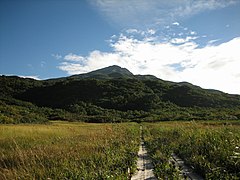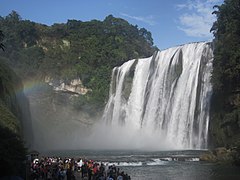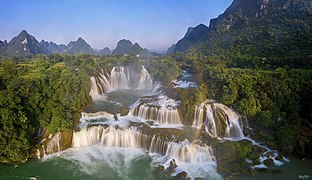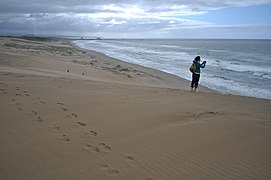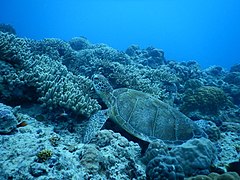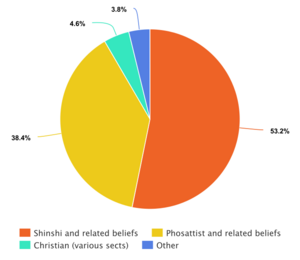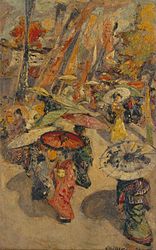Esonice
This article is incomplete because it is pending further input from participants, or it is a work-in-progress by one author. Please comment on this article's talk page to share your input, comments and questions. Note: To contribute to this article, you may need to seek help from the author(s) of this page. |
Serene Kingdom of Esonice Esonya wakoku 宝地和国 | |
|---|---|
Anthem: "Land of Flowers" | |
| Capital and largest city | |
| Official languages | Esonian |
| Recognised national languages | Esonian |
| Recognised regional languages | Various dialects |
| Religion | Secular |
| Demonym(s) | Esonian |
| Government | Federal parliamentary constitutional monarchy |
• Serene king | Shōkin |
• Prime Minister | Gimiko |
| Legislature | TBA |
| House of the lords | |
| House of the Commons | |
| Establishment | |
| 8th-9th centuries | |
| 16th century | |
| Feb 11th 1912 | |
| May 2nd 1940 | |
| Area | |
• | 354,835 km2 (137,003 sq mi) |
• Water (%) | 4.19 |
| Population | |
• 2022 estimate | 34,708,538 |
• Density | 95/km2 (246.0/sq mi) |
| GDP (PPP) | 2020 estimate |
• Total | $1.427 trillion |
• Per capita | $42,289 |
| GDP (nominal) | 2022 estimate |
• Total | $1.270 trillion |
• Per capita | $38,312 (10th) |
| Gini (2020) | 33.6 medium |
| HDI (2022) | very high |
| Currency | Esonian Zō (Ƶ) (ESO) |
| Time zone | UTC-8 |
| Date format | dd/mm/yy |
| Driving side | left |
| Calling code | +66 |
| Internet TLD | .es |
Esonice (Esonian: 宝地, Esonya), officially the Serene Kingdom of Esonice (Esonian: 宝地和国, Esonya wakoku) is an island country located in the northern part of the Shield Island Chain in West Alharu and West Aurelia. The main island making up the majority of Esonice’s landmass is the island of Shinchō (Esonian: 心州), known for its heart shape appearance, the two other major islands being the smaller islands of Mibijima (Esonian: 竹島) and Rishōjima (Esonian: 狐島). Surrounded by North Oriental Ocean to the west and the Gulf of — to the east. Esonice does not have any immediate borders except the port cities of Sademi and Mikura administered by Florentia. It’s closest maritime neighbours are the state of Giokto, the Commonwealth of Andalla and the mainland of the Confederate States of Florentia. Consisting of various islands, Esonice covers a size approximately of 354,835km2 with a population density of less than 100 people per square kilometre. Maimedo (Esonian: 橙水) is the nation’s capital, it's also the most populous city with Marusonya (Esonian: 丸口) taking second place.
Esonice is classified as a high income developed nation, home to a population of 34,708,538 inhabitants. Following after its turbulent years during the 19th and early 20th centuries, Esonice enjoyed an economic boom which lasted from the 1960s to the 1990s. Today Esonian citizens enjoy a high standard of living, alongside a free universal healthcare system, high standards of education, and economic freedom. Esonice has a vibrant cultural heritage, spanning from Esonice's artistic scene, literature, music and popular culture in media, also having a strong animation and gaming scene. Esonice is especially known for its culinary prowess and deep mythology.
Internationally Esonice is a member state of the Aurelian League, Argic-Thalassan-Alharun Regional Association, Group of Island Nations, and an observer to the League of Alharu and Aurelian Native Nations. Esonice is also a permanent member of the Assembled Nations Security Council.
Etymology
WIP
History
WIP
Geography
WIP
WIP
- Top 8 locations in Esonice by province
Hakamora volcano in the Hakamora nature reserve in Kinchō. The volcano is located in the Hakamora caldera, the largest of it's kind and is the largest volcano in the country.
Lake Gamari is Esonice's largest lake and largest fresh water lake in Esonice located in Kinkai. It's considered sacred waters in Esonian folklore
Nujimoto falls is a known tourist hotspot in Hirumi due it's beauty and the various local legends surrounding it and the cave behind the waterfall. Not far from Nujimoto is Nujimoto castle, a royal residence belonging to the Serene Monarchy.
Wakagawa falls in Jubara surrounded by karst hills. In local folklore it was believed that drinking water from the waterfall at certain times of the year could help you maintain youth, it's also the widest waterfall in the country.
Dragon's Canyon in Honchō, named after the many dragon blood trees that grow there
--- in Sankai is the highest peak in Esonice. It's one of the few places in Shinchō that has occassional snow.
The steep Chugai cliffs in Echō province, voted to be the most picturesque landscape in Esonice by Esonians in national polls.
Climate and weather
WIP
Biodiversity
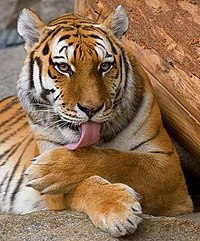
WIP
Rapid urbanisation and industralisation during the course of the 20th century alongside poaching by both foreigners and Esonian nationals took a toll on the Esonian enviornment, setting Esonice on course for desertification, deforestation and biodiversity loss with the prediction that by 2050 Esonice would lose a potential 30% of its biodiversity with droughts becoming commonplace according to a 1972 study. Government Programs have been put in place to prevent further damage to the enviornment, converting many vital areas of wildlife into nature reserves and national parks starting from the 70s. The government placed heavy consequences on illegal activities such as poaching and started putting restrictions and limits in areas such as fishing to prevent overfishing and damage to coral reefs. Various programs have also been started by non-governmental and religious groups to further protect endangered domestic species and habitats.
- Esonian fauna and flora
The Yellow hibiscus is the national flower of Esonice, it represents good fortune, joy, stability and longevity
The dragon blood tree is found in the arid regions of Honchō, the tree has many traditional and modern uses in medicine, makeup, dyes and rituals. The tree was sought after throughout history.
The Esonian white-cheeked gibbon inhabts many subtropical evergreen forests of Esonice. It's known as the Maruwū monkey (丸頬) in Esonice, meaning "round cheeked"
The Lesser flamingo can be found in parts of Honchō and northern Kinchō around alkaline lakes
Politics
WIP
Administrative divisions
WIP
Foreign Relations
Minister of foreign affairs: Mrs Yumi Kochi. (OUTDATED)
Law
TBA
Military
WIP
Economy
WIP
High tech manufacturing
WIP
Tourism
WIP
Entertainment and media
WIP
Agriculture and fishery
WIP
Mining
WIP
Demographics
WIP
Esonice has a population of approximately 34,708,538, majority of which are nationals
Largest cities or towns in Esonice
Esostatics | |||||||||
|---|---|---|---|---|---|---|---|---|---|
| Rank | Province | Pop. | Rank | Province | Pop. | ||||
 Maimedo  Marusonya |
1 | Maimedo | Kinkai | 4,121,472 | 11 | - | Echō | 428,562 |  Kado  Sushu |
| 2 | Marusonya | Hirumi | 2,585,138 | 12 | Shunjuku | Nanchō | 419,788 | ||
| 3 | Kado | Echō | 1,902,872 | 13 | Kunino | Honchō | 396,472 | ||
| 4 | Sushu | Nanchō | 1,646,473 | 14 | Yumedo | Hirumi | 333,386 | ||
| 5 | Ryusonya | Hirumi | 1,444,843 | 15 | - | Sankai | 301,824 | ||
| 6 | Sadeki | Kinkai | 1,202,372 | 16 | - | Juraba | 282,582 | ||
| 7 | Wukutsu | Kinchō | 998,846 | 17 | - | Kinchō | 252,289 | ||
| 8 | Tamasu | Hirumi | 932,472 | 18 | - | Kinkai | 248,314 | ||
| 9 | Miyoto | Jubara | 753,473 | 19 | - | Echō | 242,119 | ||
| 10 | - | Hirumi | 578,736 | 20 | Matsura | Hirumo | 229,867 | ||
Religion
WIP
According to the 2020 population census, 75.3% of Esonian citizens adhere to the indigenous Ari-kokai faith, otherwise known as Arikaism. About 21.5% of Esonians identify themselves as atheist or agnostic. It is often hard to find a precise percentage of Arikaist believers as it is decentralised faith with no holy book or religious figurehead. Arikaism is also closely interconnected with Esonice's cultural heritage, meaning that even though some Esonians identify as irreligious, they still may participate in many Arikai rituals, temple visits, celebrations, festivities as adherence to cultural traditions remains high. A significant Buddhist community also exists in Esonice, brought in by Huang merchants and migrants that came to Esonice throughout history and often influenced the culture of Esonice.
Ever since the introduction of Christianity to Esonice during the 17th century, many missionaries from places such as Tagmatium and Iverica came to Esonice trying to convert inhabitants. This left Esonice with a significant Christian minority of approximately 750,000 adherents, that make up 2.2% of the Esonian population. The majority Christian sect that is worshipped by the Esonian Christian minority is the Tacolic sect. Many individuals that identify themselves as Christian adherents are also migrants and non-Esonians, with the most significant being the Iberic communities of Esonice, specifically the Iverican community. Some Christian customs that were brought into Esonice by missionaries, migrants and Esonians converts, were partially adapted and secularised into Esonian society. Such as Valentine's Day that is thought of as similar to the Sun and moon festival, Christian-style marriage, and Christmas.
(OUTDATED)
Other religions in Esonice include the Muslim faith, specifically the Ismaili Shia sect that makes up the majority of Muslim adherents in Alharu. The Muslim community in Esonice are primarily refugees that escaped persecution and systematic genocide from San Castellino, with little being ethnic Esonians. Only 2,850 out of the 40,000 existing Muslims identified themselves as ethnic Esonian Muslims in the 2020 population census. Only 32 mosques exist in Esonice.
Migrant communities
WIP
Languages
TBA
Culture
WIP
Art
WIP
Architecture
TBA
Mythology and Folklore
WIP
Festivals and holidays
TBA
Performing Arts
TBA
Literature and philosophy
TBA
Cuisine
WIP
Fashion
TBA
Music
WIP
Media
TBA
Sports
TBA
See also
Notes
TBA
References
TBA
External links
TBA




